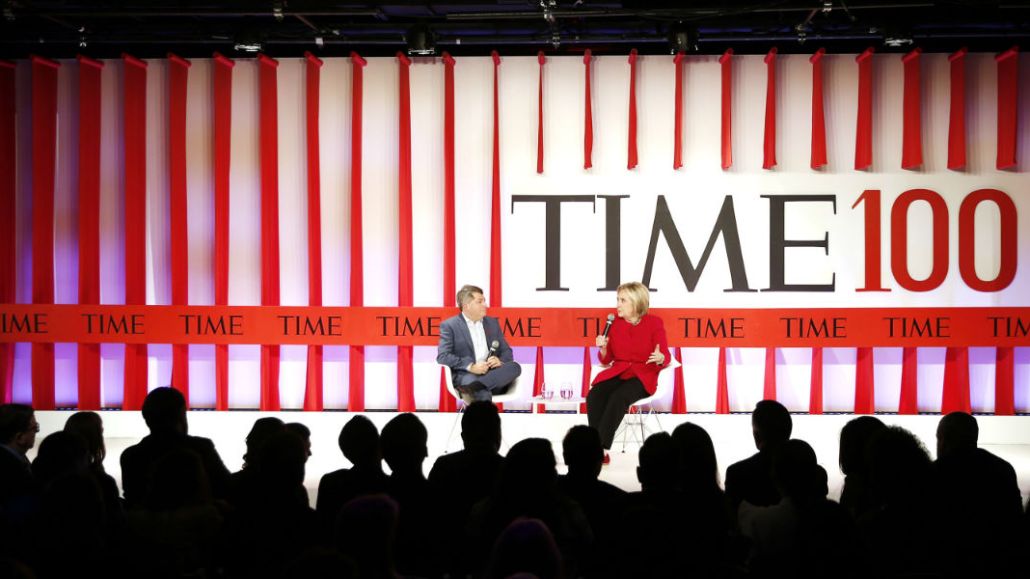Time’s new invite-only membership program will cost up to $20,000 a year

Time thinks it can build membership revenue by going ultra-expensive and ultra-affordable at the same time.
Early next year, the legacy magazine publisher will begin inviting people to join a tiered membership program affiliated with Time 100, its growing franchise that lists and profiles the 100 most influential people in the world. The most expensive tier, which offers access to every Time 100 event, private dinners featuring other Time 100 members, plus a private Time-hosted event at Davos, costs $20,000. The most affordable, a rising star tier, which gives people Time’s editorial staff (and other Time 100 members) see as ascendant figures in their fields access to one event, costs $1,750. In the middle, a delegate tier offers access to one summit, plus supplementary events throughout the year, plus briefings on what happened at other Time 100 events for $3,500.
At the other end of the spectrum, Time recently launched Inside Time, a free membership program aimed at readers who are interested in the inner workings of the editorial operation. Inside Time members get access to private newsletters offering inside look at things like how the Time 100 is put together.
Time is treating the first year of this membership program as a test-and-learn year, said Maya Draisin, Time’s vp of progress marketing; Draisin said she and her team were expecting to amass “several hundred” members in the first year, and rely on the editorial and marketing manpower that operates Time 100’s events programming to run it; a core editorial team of three people operates Time 100 with regular support from people in different departments. Time plans to hire further staffers as needed as the membership program grows, Draisin said.
Though Time 100 is nearly two decades old as an editorial product, the publisher only recently began diversifying the revenue it earns from the franchise, adding awards submissions and content licensing to smaller sections of the Time 100, such as Time Best Inventions. In the first quarter of 2020, Time will launch a similar offering for Time Health, plus a separate one for Time Family, an update of Time for Kids, in the second half of 2020.
Those diversification plays should help Time make the most of an events series and community that Time said it will be careful not to dilute or water down.
“It is never our goal to get to the hundreds of thousands of members,” Draisin said.
Time spent its first full year as an independent company diversifying its revenues beyond print subscriptions and digital advertising. Its play to expand Time 100 follows a trend among media companies, which are looking to quickly build diversified revenue streams around sub-brands or franchises. Forbes, for example, plans to launch a paid membership program around its 30 Under 30 awards, while Complex bottled the popularity of its video series “Hot Ones” to create a branded line of hot sauces and a game show.
“So much of brand-building now is around community,” said Thomas Ordahl, the chief strategy officer of the brand consultancy Landor. “The question is whether you can take all of that equity and then wrap other types of offers and services and benefits around it that become sources of revenue for the brand. That’s where a lot of brands that are smart are pushing themselves.”
Consumer revenue already accounts for “about a third” of Time’s revenue, Time CEO and editor in chief Edward Felsenthal said. Most of that is concentrated in its print circulation. Felsenthal said he would like to expand consumer revenue beyond print, but designed the Time 100 memberships and Inside Time this way because he’s skeptical of the subscription products built around restricting access. “I am not bullish on the three to five [articles] free, then you hit the wall,” Felsenthal said. “I think there’s subscription fatigue at that general level.”
For now, the Time 100 membership will be organized around the events, including three summits and a gala. Draisin said that the group may also extend invitations to events organized by members, such as film screenings from member actors or directors, or rallies put on by activists, or to other Time events, such as a Time VR exhibition slated for launch in Chicago next year. Draisin said that she and her group were weighing options to connect members to one another, such as an intranet or Slack channels, though the team will wait for a critical mass of participants to ask for features before building them.
But the priority will be to make things that emphasize the opportunity of being in the room with people. “You’ve got all these great people in the room; what are you doing with them?” Felsenthal said.
More in Media

A timeline of the major deals between publishers and AI tech companies in 2025
Here’s a list of all the major deals signed between publishers and AI tech companies in 2025.

No playbook, just pressure: Publishers eye the rise of agentic browsers
For the bulk of publishers, Google is, as ever, the one to watch. It’s already got agentic features within its Chrome browser, but that’s the tip of the iceberg, some say.

The biggest SEO lessons in 2025 for publishers
KPIs are changing, more AI search data is becoming available, and publishers are looking beyond search to grow their audiences and revenue.








